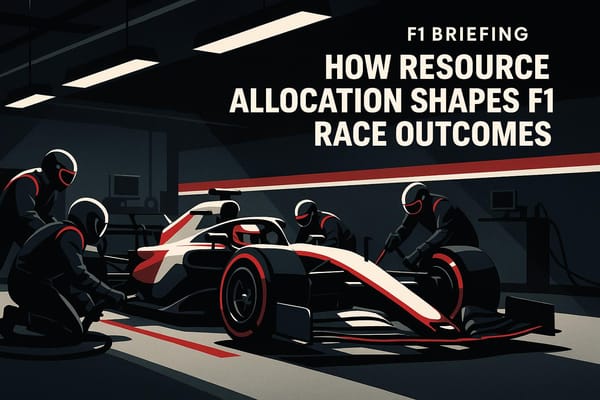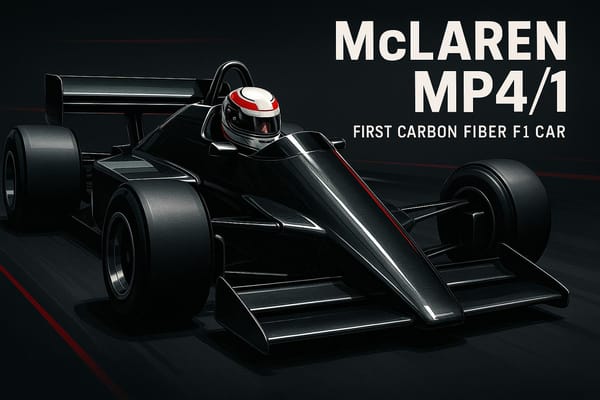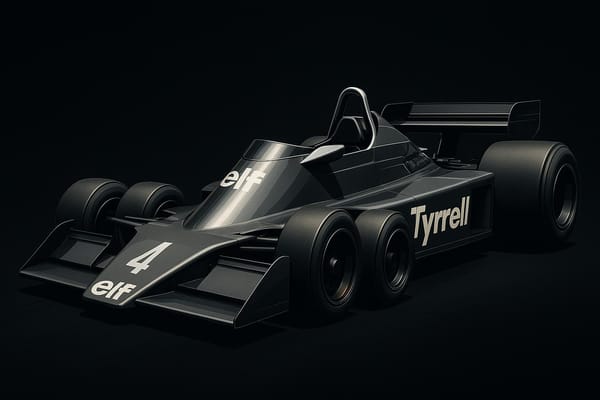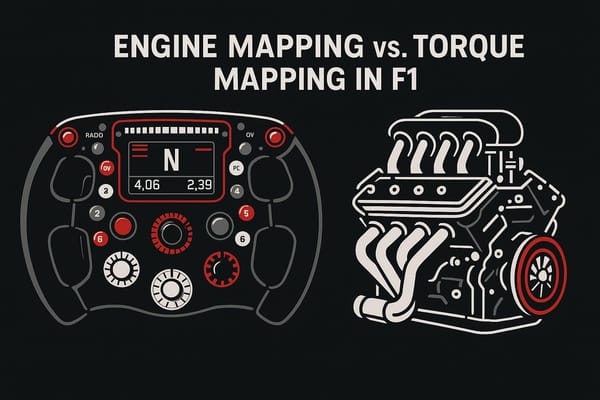Jeddah Corniche Circuit: The High-Speed Street Track Redefining Night Racing in Saudi Arabia
Explore the Jeddah Corniche Circuit, a revolutionary night track in Saudi Arabia that blends speed, design, and economic impact.
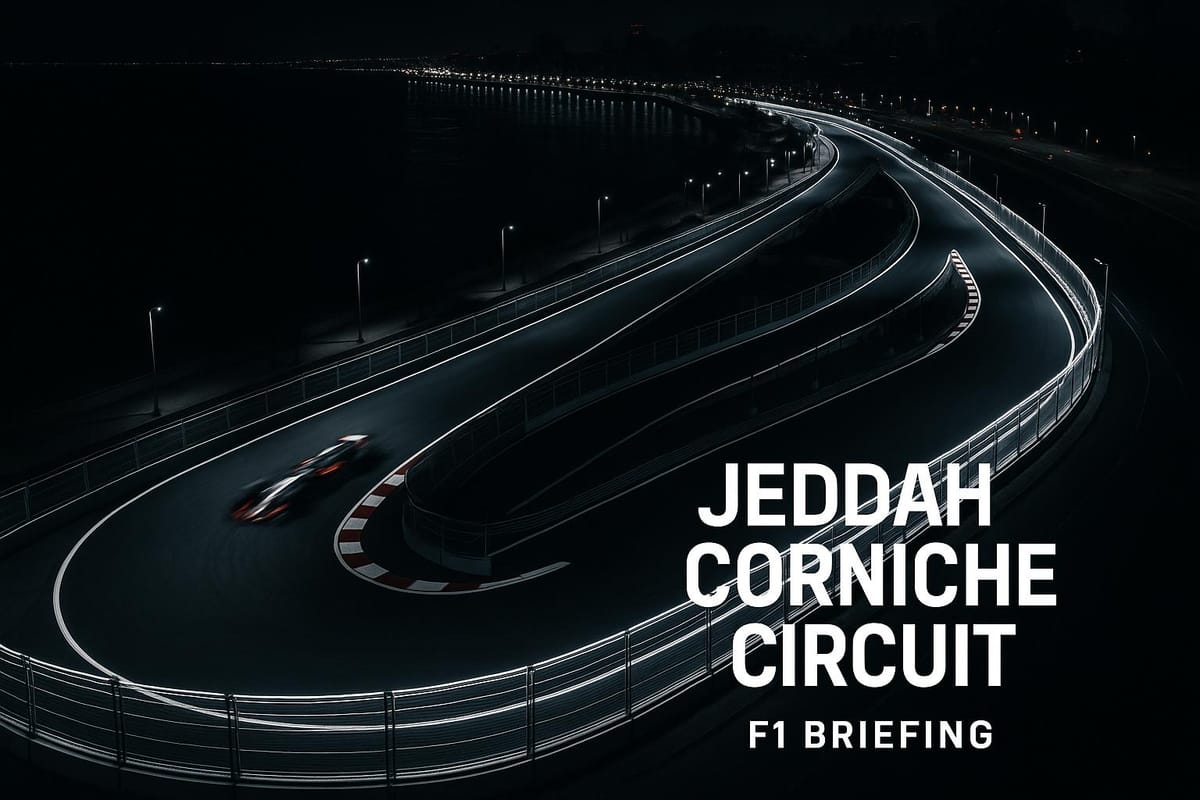
The Jeddah Corniche Circuit is one of Formula One's fastest and most challenging tracks, combining high-speed straights, 27 corners, and a stunning waterfront location. Opened in November 2021, this 3.83-mile (6.174 km) street circuit pushes drivers to their limits with an average speed of 155 mph, making it the fastest street circuit in F1 history. Designed for night racing, it features cutting-edge LED lighting and offers breathtaking views of Saudi Arabia's Red Sea coastline. Here's what makes it stand out:
- Speed & Design: 80% of the lap is at full throttle, with corners designed for wheel-to-wheel battles.
- Night Racing: Advanced lighting systems ensure visibility and add to the spectacle.
- Driver Challenges: High-speed corners demand precision, while tire management and energy systems are critical.
- Economic Impact: A key part of Saudi Arabia's $20 billion Jeddah Central Project, boosting tourism and local motorsport talent.
The Jeddah Corniche Circuit isn't just a racetrack - it's a symbol of Saudi Arabia's transformation in sports and entertainment.
The Technical Challenges Teams Face at F1's Fastest Street Circuit | F1 TV Tech Talk
Track Design and Layout
The Jeddah Corniche Circuit isn't just a night racing spectacle - it’s a showcase of how design can shape race strategies. With its unique blend of high-speed sections and the tight, technical challenges typical of street circuits, this track pushes the boundaries of what Formula One circuits can achieve.
Design Process
The circuit was brought to life by Tilke Engineers & Architects in collaboration with Formula One's technical team. Craig Wilson, F1's Head of Vehicle Performance, highlighted a significant hurdle in its creation:
"The biggest challenge was working out how to come up with a track concept within what is quite a narrow strip of land, that still had decent cornering sections with a wide range of corner speeds and not just be a layout of hairpins, tight corners and straights."
To overcome this, advanced simulation tools were used to fine-tune corner sequences and racing lines. The goal? To encourage intense wheel-to-wheel battles without relying solely on DRS zones.
Track Specifications
The technical details of the Jeddah Corniche Circuit make it stand out:
| Feature | Specification |
|---|---|
| Total Length | 3.83 miles (6.174 km) |
| Number of Corners | 27 (the most in F1) |
| Average Speed | 157 mph (252.8 km/h) |
Carsten Tilke emphasized the circuit's speed, stating:
"It will be the fastest street circuit in terms of average speed, estimated to be 252 km/h."
This combination of speed and complexity ensures it’s a challenge even for the most experienced drivers.
Waterfront Integration
Located along Jeddah's Corniche, the circuit takes full advantage of its coastal setting. The sea breezes naturally help with cooling, adding an extra layer of performance optimization. But it’s not just about functionality - this urban track also delivers an immersive experience for fans and drivers alike.
"Why this circuit works so well is that it will have the atmosphere of an urban venue, but the space and run-off so we can increase the speed of the corners. This is something you can normally only do at a permanent facility, but here we have been able to create very challenging fast corners that the drivers will love."
The waterfront location enhances the viewing experience, surrounded by Jeddah's modern skyline, luxury hotels, and a vibrant marina. These features not only elevate the event's appeal but also play a subtle role in shaping team strategies and setups.
Racing Demands and Team Tactics
The circuit’s cutting-edge design brings fresh challenges for teams, pushing both technical skills and tactical planning to new levels. With a staggering 80% of the lap spent at full throttle, teams must carefully balance power output and resource management to stay competitive.
Power and Energy Systems
This high-speed track puts immense pressure on power units and energy recovery systems. Teams need to fine-tune their energy deployment strategies across the 3.83-mile circuit. The Energy Recovery System (ERS), for instance, provides an additional 160 horsepower for 33 seconds per lap.
Here’s a quick breakdown of how key components influence performance:
| System Component | Performance Impact |
|---|---|
| KERS Boost | Adds up to 80 bhp for 7 seconds per lap |
| ERS Output | Delivers 120 kW (160 bhp) for 33 seconds |
| Full Throttle | Makes up 80% of the lap distance |
Sergio Perez shared his thoughts on the track’s unique demands:
"It looks like a really fast circuit, so I am excited to get out there and see how it feels in the car for real. I don't think I've ever driven on such a fast circuit before with so many high-speed corners, so I think it will be quite a challenge. Everyone is in the same position and hasn't had the opportunity to race there yet so practice sessions will prove to be very important to get our eye in."
Tire Management and Aerodynamics
Tire management stands out as a critical factor on this circuit. While the surface isn’t overly abrasive, the layout exerts significant lateral forces on the tires. Teams must strike a delicate balance between maximizing downforce and minimizing drag to achieve peak performance.
Pirelli’s analysis sheds light on the challenges for the 2025 race:
"The track surface is not very abrasive, with an average level of roughness, but the lateral forces exerted on the tyres are considerable, although not at the level to be found at Suzuka or Barcelona for example."
Early practice sessions have already revealed issues with tire graining due to dust accumulation. However, as support races lay down rubber, conditions improve, favoring one-stop strategies with softer tire compounds for the 2025 event.
Overtaking Zones
The circuit’s layout features three DRS zones, offering plenty of chances for overtaking. Key opportunities are concentrated around Turns 1 and 27, where long straights lead into heavy braking zones. These areas demand teams to seamlessly integrate power management with aerodynamic efficiency.
Recent races have highlighted the effectiveness of these design choices. For example, during the 2024 Saudi Arabian Grand Prix, Max Verstappen leveraged these zones to secure a win for Red Bull. These overtaking zones not only enhance the racing spectacle but also emphasize the importance of precise car setups.
Mario Isola, Motorsport Director, underlines the need for flexibility:
"It's vital to find the right setup and be ready for anything at Jeddah: a track that's very different to Bahrain."
Night Race Operations
The Jeddah Corniche Circuit's night racing setup showcases cutting-edge technology and careful planning, raising the bar for Formula One events. Every system is designed to ensure top-notch racing conditions once the sun goes down.
Lighting Systems
The backbone of Jeddah's night racing is its advanced Total Light Control – TLC for LED™ system. This setup features 2,212 networked LED fixtures with fully internal wiring, offering excellent visibility while reducing glare - an essential factor for drivers, spectators, and broadcast teams alike.
| Component | Specification | Benefit |
|---|---|---|
| LED Fixtures | 2,212 units | Full track visibility |
| Warranty Period | Until 2031 | No maintenance costs |
| Control System | Patented TLC tech | Minimized glare for better safety |
| Installation Time | 8 months | Completed swiftly by F1 standards |
This sophisticated lighting system not only ensures a visually stunning race but also directly impacts the driving experience.
Driver Conditions
Racing at night on Jeddah's high-speed, wall-lined circuit presents unique challenges. The physical demands of the race are significant, as noted by Charles Leclerc:
"I think physically it's definitely the most or one of the most difficult races of the season."
The track's smooth surface, however, minimizes tire wear, allowing drivers to push harder. Despite this, the race's intensity can still be grueling, as Sergio Perez shared:
"It just makes it all together a very unpleasant race."
Car Setup Changes
Night racing also requires teams to fine-tune their cars to adapt to the changing conditions. With an average speed of 155 mph, aerodynamic adjustments are crucial for optimal performance. Additionally, pit stops - averaging around 19.86 seconds - add another layer of strategy, especially when factoring in the likelihood of Safety Car interventions.
Local Impact and Development
The Jeddah Corniche Circuit has brought about significant economic and social changes in Saudi Arabia, extending its influence well beyond the realm of motorsport. It has become a hub for economic activity, talent cultivation, and urban transformation.
Economic Benefits
The circuit plays a pivotal role in Saudi Arabia's sports industry, generating substantial economic returns. With an annual $55 million hosting fee paid to Formula 1 and a $500 million investment in the pit building alone, its financial impact is undeniable. Key data highlights this growth:
| Economic Indicator | 2016 | 2019 | Growth |
|---|---|---|---|
| Sports GDP Contribution | $2.4B | $6.9B | 187.5% |
| Sports Events Revenue | – | $2.8B | – |
| Expected Annual Growth | 8% | – | – |
The circuit has also boosted tourism, with race weekends driving business in hotels, restaurants, and retail outlets. This economic momentum is further complemented by efforts to develop local motorsport talent.
Driver Development Programs
The Saudi Motorsport Company (SMC) is dedicated to fostering local talent through initiatives that open doors for young motorsport enthusiasts. One standout example is the FIA Girls on Track program held in Diriyah in February 2023, where 120 young women aged 12–18 gained hands-on exposure to careers in motorsport.
"It's not about just finding young Saudi competitors for the future or young Saudi champions, whether it's two wheels or four wheels. It's about giving the opportunity to young people who want to be involved in the sport." - Martin Whitaker, CEO of SMC
These programs align with broader urban renewal efforts in Jeddah, creating a synergy between sports and city development.
City Development
The Jeddah Corniche Circuit is a cornerstone of the $20 billion Jeddah Central Project, which aims to reshape the city by 2030. Key features of the project include:
| Feature | Specification |
|---|---|
| Total Area | 5.7M square meters |
| Residential Units | 17,000+ |
| Hotel Rooms | 2,700 |
| Green Space Coverage | 40% of total area |
This initiative has also driven policy changes. The introduction of Formula E in 2018 led to the establishment of tourist visas, now allowing visitors from over 50 countries to obtain visas on arrival. The integration of sports with urban development reflects Saudi Arabia's broader transformation.
"Only four years ago, women were not allowed to drive (in Saudi Arabia), so you can see that development is actually much more than just sports. It's about liveability, it's about giving a chance for the youth, it's about being present in the international arena." - Prince Abdulaziz, Saudi Minister of Sports
Conclusion
The Jeddah Corniche Circuit stands out as a bold step forward in the world of night racing, blending cutting-edge design with technical challenges. Its mix of high-speed straights and intricate corners pushes both drivers and teams to their limits, making it one of the most demanding tracks in Formula One.
The sheer physical and mental toll it takes on drivers is underscored by Charles Leclerc, who remarked:
"I think physically it's definitely the most or one of the most difficult races of the season."
This level of difficulty not only highlights driver skill but also drives innovation in race strategies and technology. From its advanced lighting system to its seamless integration with the coastal surroundings, the circuit showcases how modern design can elevate both the competition and the overall spectacle.
Beyond motorsport, the Jeddah Corniche Circuit plays a key role in Saudi Arabia's broader ambitions to grow its sports sector and economy. Prince Khalid Bin Sultan Al Faisal captured this vision perfectly:
"Night race adds a special touch. We think it's the best option for us. We are going to light the Red Sea and the lagoons around the track - and do some light shows. We had our first night race in FE and it was a success."
FAQs
What sets the Jeddah Corniche Circuit apart from other Formula 1 tracks?
The Jeddah Corniche Circuit is known as the fastest street track in Formula 1, with drivers clocking an average speed of around 157 mph (252.8 km/h). It boasts an incredible 27 corners - the most of any circuit on the calendar - and ranks as the second-longest track in F1. This combination of blistering speed and the intricate, narrow demands of a street circuit creates a thrilling atmosphere, especially under the lights during night races.
What makes night racing at the Jeddah Corniche Circuit so special?
The night racing at the Jeddah Corniche Circuit delivers an unforgettable mix of high-speed thrills and breathtaking visuals. The track, lit up with brilliant illumination, highlights the beauty of the Red Sea and its surrounding lagoons. Add to that the vibrant light displays, and you’ve got an atmosphere that feels nothing short of electric.
In Saudi Arabia, evenings hold special meaning, often serving as the prime time for social gatherings. This race taps into that tradition, combining intense competition with entertainment. It’s more than just a sporting event - it’s an all-encompassing evening experience, complete with celebrations and live concerts. This dynamic setup amps up the energy for both fans and drivers, creating a night to remember.
How does the Jeddah Corniche Circuit support Saudi Arabia's economy and urban growth?
The Jeddah Corniche Circuit has become a cornerstone in Saudi Arabia's push for economic growth and urban transformation. Hosting a Formula 1 race draws in international visitors, who contribute to the local economy by spending on hotels, restaurants, transportation, and tourist attractions. This surge in activity not only supports local businesses but also creates job opportunities, particularly in the hospitality and retail industries.
Building the circuit itself brought substantial investment to the area, fueling growth in various industries and infrastructure projects. This aligns closely with Saudi Vision 2030, the country's ambitious plan to diversify its economy by emphasizing sports and entertainment. By staging world-class events like Formula 1, Saudi Arabia not only boosts its global profile but also lays the groundwork for sustainable urban and economic development.
Related posts
- Track by Track: The Complete Story of the 2025 Formula 1 Calendar
- Monaco Grand Prix Circuit Guide: The Prestige, Precision, and Pressure of F1’s Crown Jewel
- Albert Park Uncovered: The History, Evolution, and Challenges of the Australian Grand Prix Circuit
- Suzuka’s Legacy: How Japan’s Iconic Figure-8 Circuit Became a Driver Favourite

